Gasoline bicycles: pros and cons, tips for choosing
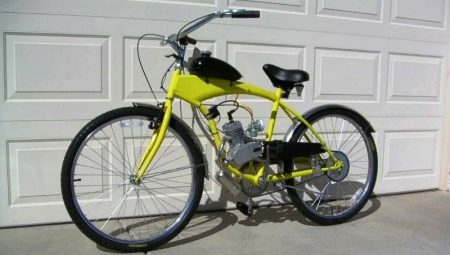
Gasoline bicycles, better known as motorcycle peds, were very popular during the Soviet era. In the post-Soviet period, interest in them faded a little, which is associated with the arrival of Chinese-made electric scooters and mopeds on the domestic market.
A bit of history
The first bicycles with gasoline engines in the USSR were designed and put into production in the early 50s of the last century. The motor-pedals were equipped with the D engine, which was produced by the Krasny Oktyabr plant. In total, the enterprise has produced several tens of millions of gas engines, allowing speeds up to 50 km / h. A little later, the French, who mastered the production of motors under the MotoBekan brand, joined the production of gasoline engines for bicycles.

In the 70s, DOSAAF branches carried out mass rides on motorbikes, gathering a large number of spectators. The high popularity of bicycles with gas motors was due to the fact that the purchase of a motorcycle, and even more so a car, was inaccessible to the majority of Soviet citizens, and the presence of a motorcycle pedal made it possible to solve the problem of fast movement. They went to the dacha, fishing and in the forest to pick mushrooms on motor-pedals, especially since in their cross-country ability they were much superior to ordinary bicycles and easily coped with steep climbs and off-road conditions.
Today, the most famous manufacturer of gasoline bicycles is the Chinese plant Forester, which produces models with engines up to 4.5 liters. with.

Peculiarities
A bicycle with a gasoline engine is a two-wheeled vehicle driven by a motor with a capacity of 1 to 4.5 liters. with. The volume of the internal combustion chamber of the engine is 45-50 cm3, which does not allow the motorcycle to be classified as a motorcycle.
In fact, they are ordinary bicycles, which are much more comfortable to move around than on traditional models.

In addition to the engine, the design of the motorcycle pedal includes a muffler, a gas tank, a gearbox, a clutch lever and a throttle handle. The volume of the fuel tank is usually 1.5 liters, the gas consumption is 2 l / 100 km. In addition to gasoline, engine oil is poured into the fuel tank, the amount of which depends on the degree of engine run-in. So, for a non-rolled motor for 10 liters of gasoline, add 0.5 liters of oil, and after running in, add 1 liter of oil to 30 liters of gasoline.
The location of the motor on the bike frame varies. On earlier models, the frame was drilled and the placement of the motor was extremely awkward. Modern samples are equipped with mounts that allow you to install the motor without violating the integrity of the structure, and on some motopeds it can even be located on one of the wheels.
Many bikers purchase the engine separately and upgrade their bike, especially since such powerful motors as "Spring-20" and "Friction clutch" are easily installed even on three-wheeled models intended for elderly people. Despite the presence of a motor, motopeds retain the ability to move with the help of pedals, which is necessary in case of a breakdown, lack of fuel or when overcoming prolonged climbs when the engine needs help.
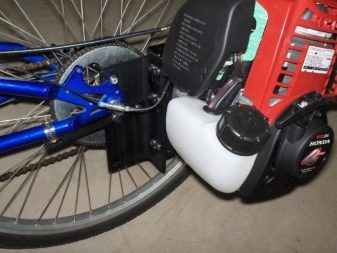

Views
The classification of motorcycle peds is made according to the type of engine and clutch with which the vehicle is equipped.
- Modern models are equipped with two- or four-stroke engines. The former are less economical and low-powered, but they are inexpensive and are quite suitable for a leisurely ride. The latter are more powerful, allow higher speeds and consume little fuel.
- The second criterion for the classification is the method of transferring torque to the wheel and the layout of the motor.
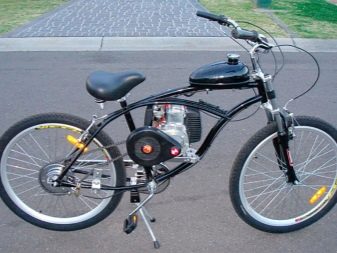

On this basis, motorcycle peds are divided into two types.
- The first includes models equipped with disc clutch engines. Their motor is located above the pedal carriage in the frame fork, and is connected to the rear driven sprocket by means of a chain. The clutch handle is traditionally located on the left hand side of the handlebars. The advantages of such models include the ability to start the engine from a tug, and the disadvantages are the need to install additional equipment, such as a fuel tank, clutch handle and shield.
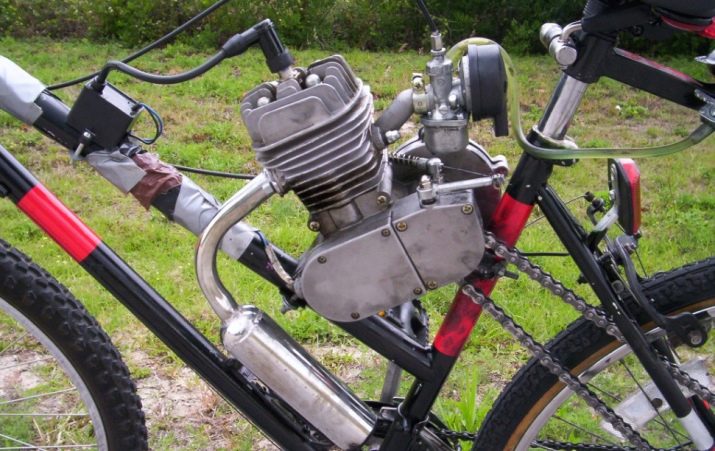
- The second type is represented by motopeds equipped with engines with a centrifugal clutch. Motors of this type are designed as a monoblock, which includes a fuel tank, muffler, centrifugal clutch and ratchet start mechanism. But despite the presence of complex components, the candy bar is lightweight and compact enough. The centrifugal clutch allows you to quickly start moving by pressing the gas, and from the controls there is only the throttle handle and the engine shutdown toggle switch. There is no traditional clutch lever in these models. The advantages of such motors include the ease of driving a motorbike, and the disadvantages are too much noise.
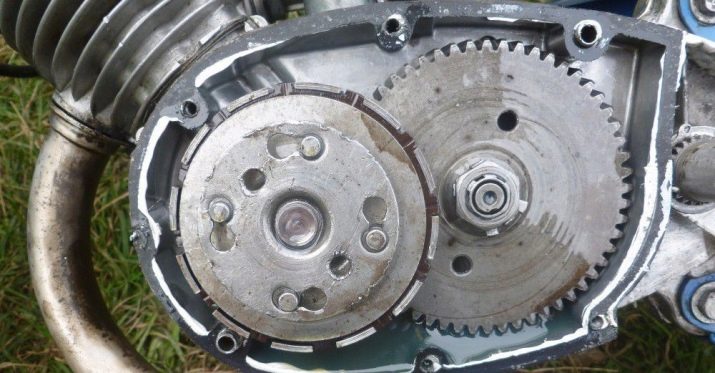
Advantages and disadvantages
Despite the controversy over the appropriateness of installing a gasoline engine on a bicycle, this vehicle has many fans. Motorbikers note the ease of riding and the minimum amount of physical effort. Attention is also drawn to the fact that if an electric scooter suddenly runs out of battery in the middle of the road, it will have to be pushed to the nearest outlet.
With gasoline models, everything is more predictable: You can always visually check the fuel level in the tank, and take spare fuel with you on a long trip. In addition, a motorcycle can be driven by pedals, which cannot be done with scooters and mopeds.
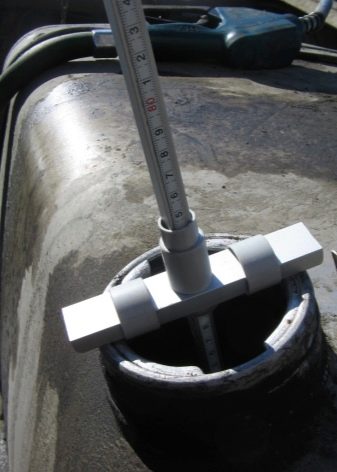
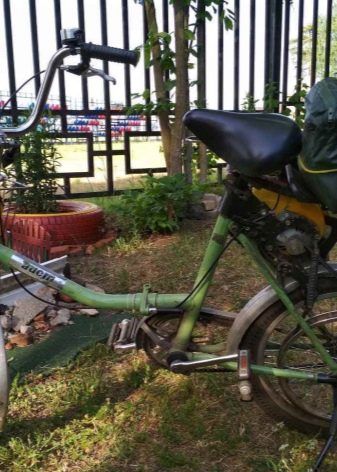
Another undoubted advantage of motorcycle peds is the ability to move at a decent speed and quickly get to your destination, while spending the minimum amount of gasoline. In addition, they are much cheaper than scooters and mopeds, and the service life of a gasoline engine is much longer than that of an electric one. With proper operation and the use of high-quality fuel, the engine can operate without interruption for over 10 years.
Bicycles with a gas engine weigh a little - about 30 kg, which is almost 2 times less than the weight of the simplest scooter. Many modern motorcycle peds are equipped with a generator that feeds the headlight and brake light, fenders, a speedometer and a fuel gauge. The presence of additional equipment makes the operation of the facility more convenient and safe.
Like any other vehicle, motorcycle peds are not ideal. In addition to a large number of advantages, they have significant disadvantages. These include the high noise level produced by gasoline engines during operation, as well as harmful emissions generated during the operation of an internal combustion engine.
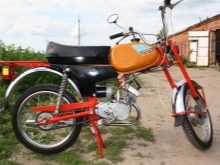
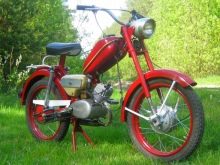
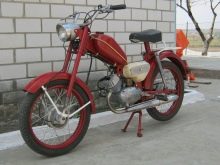
How to choose?
When buying a bike with a gasoline engine it is necessary to pay attention to a number of important points.
- Transmission. On many motopeds, a constant gear is installed, which means that it is impossible to change the speed mode with the same engine power. Therefore, for long journeys, it is better to choose a model with a transmission.
- Wheel size... The best option is wheels with a diameter of 26 ". They are characterized by good maneuverability, and spare parts for them are available in a wide range.
- Reducer. The best choice would be a model with a reduction gear with a gear ratio of 5: 1. These options are considered the most convenient and reliable.
- Engine. It is necessary to focus on the products of well-known brands that value their reputation. When buying a Chinese model, you need to make a test run of the motor and let it run idle. If there are no traces of fuel left on the ground, then the engine is assembled with good quality.
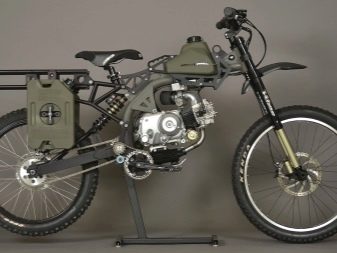
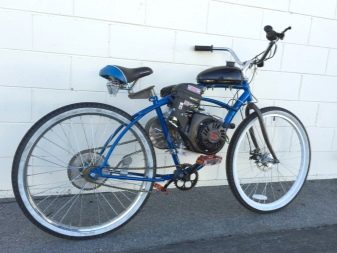
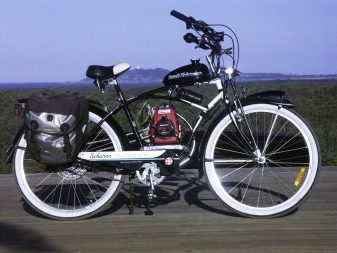
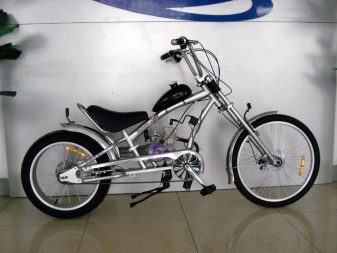
The cost of motorcycle peds varies from 11 to 35 thousand rubles, and depends on the engine and equipment. For example, new model Forester GMG, produced with single-cylinder engines of modifications F-50, F-60 or F-80, air-cooled, dry friction clutch, protective cover and a 4-liter fuel tank will cost 32,000 rubles, while such a motorcycle pedal will cost significantly less from the hands - about 11,000 rubles.
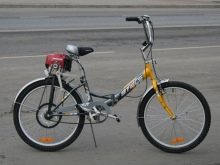
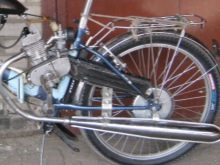
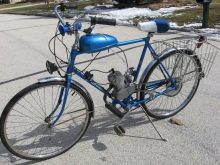
For information on how to assemble a bike with a gasoline engine from China, see the next video.








